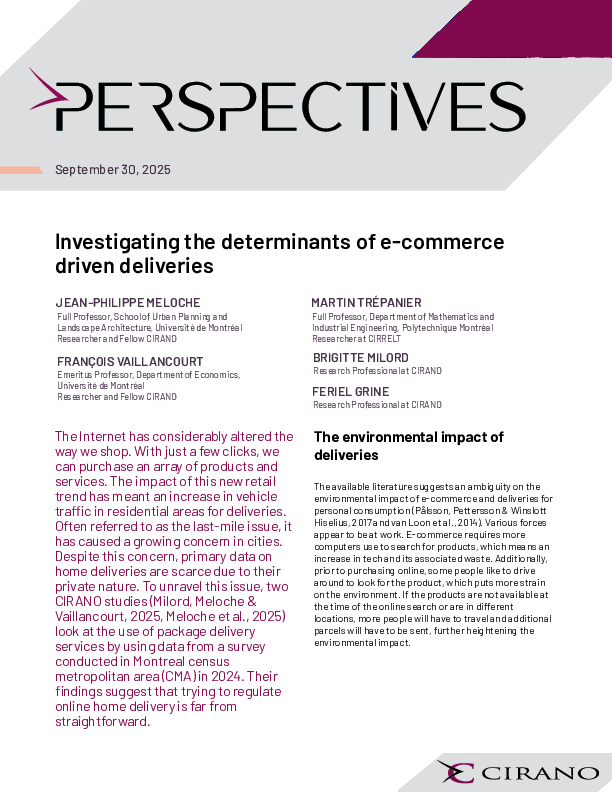© 2025 CIRANO. All rights reserved.
Upcoming events
Past events
September 23, 2025
Launch of the book “Québec: A Health System Profile”.
Latest publications

Investigating the determinants of e-commerce driven deliveries
The Internet has considerably altered the way we shop. With just a few clicks, we can purchase an array of products and services. The impact of this new retail trend has meant an increase in vehicle traffic in residential areas for deliveries. Often referred to as the last-mile issue, it has caused a growing concern in cities. Despite this concern, primary data on home deliveries are scarce due to their private nature. To unravel this issue, two CIRANO studies look at the use of package delivery services by using data from a survey conducted in Montreal census metropolitan area (CMA) in 2024. Their findings suggest that trying to regulate online home delivery is far from straightforward.
[ - ]












